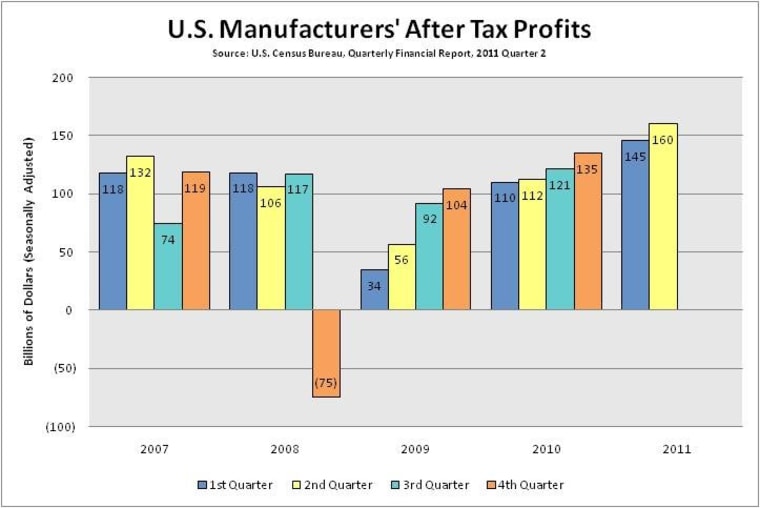The last few years have been tough on many Americans who work in the manufacturing industry, but they haven't been nearly as tough on the manufacturers’ profits.
U.S. manufacturers have seen a steady uptick in profits since bottoming out in late 2008, according to the most recent data from the U.S. Census Bureau.
After-tax profits for U.S. manufacturers totaled $159.7 billion in the second quarter, according to the Census Bureau. That’s nearly triple what they were in the second quarter of 2009, when corporations were just starting to emerge from the deep economic blows of 2008. The data is seasonally adjusted.
The Census data also include any money the manufacturers made or lost by producing or selling goods in other countries.
Joel Naroff, economist with Naroff Economic Advisors, said that’s one reason profits have been on the rise over the past couple of years.
“Globalization is, to no small extent, driving a fair amount of these profits,” Naroff said.
Another big help: The weak U.S. dollar.
“The weak dollar has begun to actually do what it’s supposed to do and that’s to generate more exports,” Naroff said.
Still, even as manufacturers have seen their bottom lines improve, job gains have been scarce.
About 11.7 million people are currently employed in U.S. manufacturing, according to the latest Bureau of Labor Statistics data. That’s about two million fewer than when the recession began in December of 2007, although it is an improvement over a low of around 11.5 million in late 2009.
Some companies have automated more functions so they can boost productivity without adding a lot of workers, while others have simply found a way to squeeze more work out of their existing workforce.
The big question now is whether such gains can last. Naroff said compensation costs may have increased since the second quarter, and manufacturers may also be paying more for the commodities they use to make their products. Those factors could mean that profits start to slow, he said.
